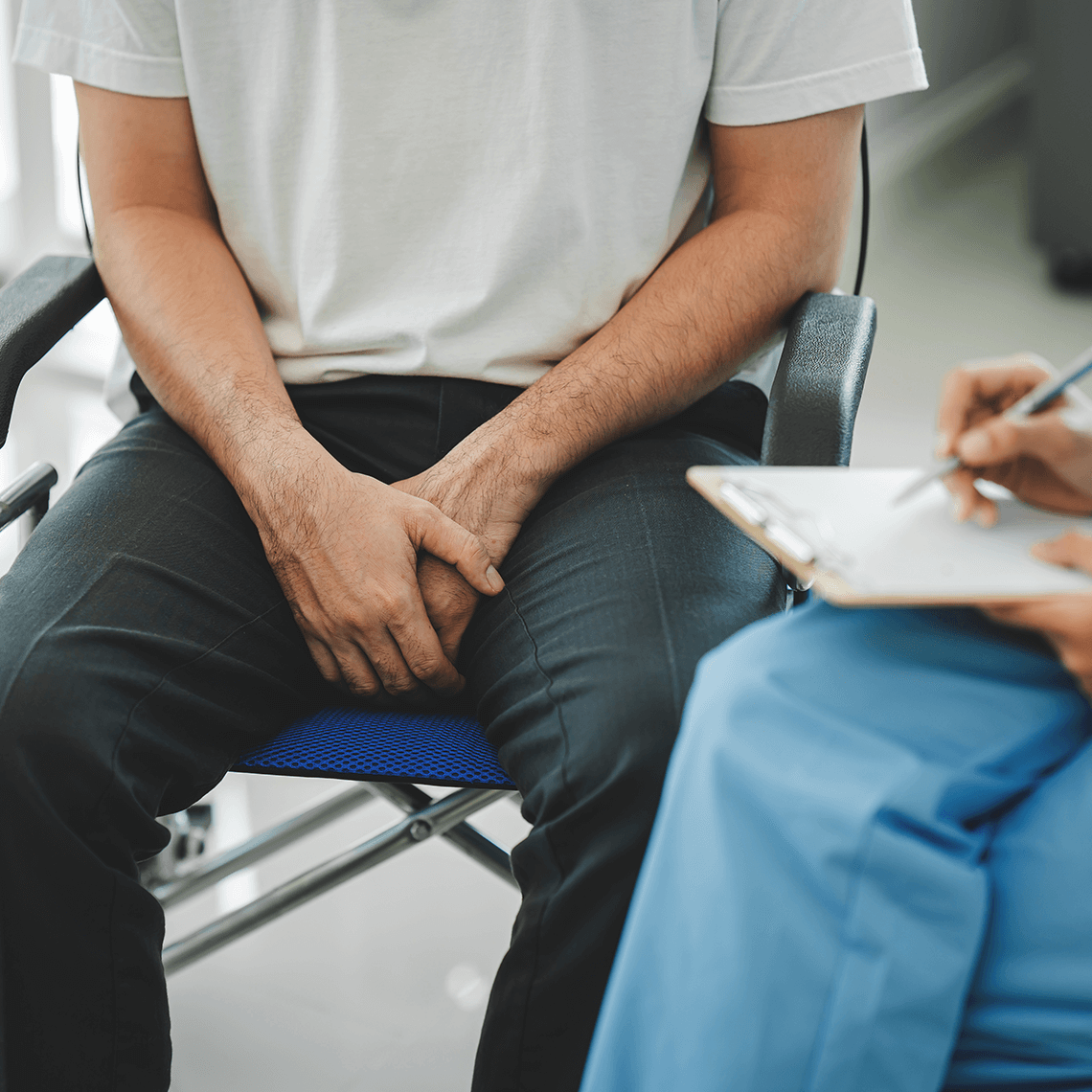Podcast
Help For Optimizing Care and Preventing Risk With Virtual Visits
Mar 30, 2021

Commentators
- Philip Ciampa, MD, MPH
Transcript
The rapid deployment of virtually delivered health care during the pandemic, has gained the attention of patient safety leaders. The Academic Medical Center Patient Safety Organization has just released a document that offers guidance to clinicians to optimize care and prevent risk. The AMC PSO convened its members from multiple institutions, using the confidential and privilege protections of the federal Patient Safety Act. It enables members to collect, analyze, and report patient safety data, and to exchange learnings in a protected setting, to improve patient safety and the quality of care. An example of such a convening is the Virtual Care Task Force organized by the AMC PSO. The Virtual Care Task Force comprised an interdisciplinary group of clinicians from community hospitals and academic medical centers.
The task force met over the course of six months and produced a guidance document called Patient Safety Guidance for the Virtual Visit: Managing Risk in a New Care Setting. It is available free online to the public, and it covers a range of issues from the first decision to engage in a virtual visit with a patient, to the follow-up needed to close important loops, and even quality improvement measures.
Dr. Philip Ciampa was a member of the AMC/PSO Virtual Care Task Force, and he joins us now to discuss some of the recommendations in the document. Dr. Ciampa is an internist at Atrius Health, a large group practice that serves the Boston area and other Eastern Massachusetts communities.
Q.) Dr. Ciampa, thank you for joining us.
A.) Thank you for having me.
Q.) When we look at how telehealth is going at the moment, how would you describe the upside and the downside generally? Of course, this is in the context of the COVID pandemic.
A.) Sure, so the big picture, telehealth is really helpful for both patient and provider in sort of establishing another way that people can receive care. In the past as an internist and as a primary care physician, I sort of was able to offer people a limited range of things if they presented with various issues that they needed help with. Most of the time it was, ‘come to the office.’ And what telehealth does, big picture, it just sort of flips that around and gives us the option for me to reach patients where they are. One of the things that’s interesting is, you know, it’s an understated problem how much time and sometimes money it takes for patients to travel to come see us in the office. It can really add up, particularly with people that have chronic disease. Telehealth is just one way that I can cut through that and help reduce things like no-shows and people who sometimes avoid needed care because it’s too difficult to come in physically to see us. I would say the biggest downside right now is that it’s still very new. I think for a lot of us practicing in medicine and also for a lot of patients, 2020 was the first time that they ever received care through virtual means, and there’s still a lot to learn. It’s a new level of care and we’re all still trying to figure out how to best be able to do that for every scenario that people might be presenting for.
This year our challenge is really around how do we take what we were able to get started so quickly last year and make it enduring, so really build systems that integrate well with the other types of care that we deliver and build off what we learned, make things better, make things safer, and make the experience truly excellent.
Q.) Just like in person visits, a lot of the risks come in follow-up, closing various loops. Do you think that’s the most risky part of this?
A.) I think there’s two elements. The first is you’re thinking about telehealth is a level of care. And so the first thing we want to get right is to make sure that when a person is scheduled for a video visit that that’s the right mechanism and the right level of care for that need. And so I think I always counsel folks that are doing these visits, the first decision you should make is whether or not that visit is suited for the video medium, and you really want to be able to deliver the standard of care regardless of it’s on video or if it is in the office. So you have to take into account what the person is talking about. You also have to take into account things that you may not think about, such as how good is the video quality, how good is the audio quality. Are those sufficient for me to do what I need to in this visit and make an adequate medical determination for the need. So that’s the first bucket of risk, and I think the second bucket is in closing the loop. So no one thinks about really what happens after they walk out of the office when they see me. They go to the front desk, they make a follow-up appointment, they may be handed an after-visit summary that helps to wrap up the visit. They may be connected with the lab that’s downstairs or radiology, which is downstairs. Those things are totally different on a video, and I think for a lot of folks, especially folks that are doing it for the first time, they may end their visit and not be sure how those things are completed. And so it’s really important to communicate that in the visit, and to have some systems baked in after the visit to make sure that those necessary steps are covered and that the patients are getting the care that they need afterwards.
Q.) So the Academic Medical Center PSO recently published a guidance document. You were on the Virtual Visit Task Force, and this is designed to help with care in the virtual setting. How would you highlight the recommendations and how they might be used in practice?
A.) The recommendations were a great primer in general on telehealth. And looking at it again, I think that it’s a really wonderful resource for health systems that are still working to set this up or looking to make improvements. It covers a lot of ground and I think in a very clear way for how you can think about issues around safety and experience in the setting of a telehealth program. I also think it’s very helpful for individual practicing providers and we certainly shared it with all of ours. Because I think it helps to highlight some of the things that may be gaps in people’s own recollections or own experiences that they want to shore up, such as webside manner and other things that they might be thinking of as they do visits. So we would really think about this, encouraging all of our providers to review it and really digest it. And we know that this is going to be an area that there will be more learning to come as we continue to synthesize our experience from last year.
Q.) Yes, it is very comprehensive. It walks us through before, during, and after a virtual visit. A lot of the recommendations seem to focus on the structure and the organization of the visit. Why is that so important?
A.) So much of medicine is about structure, and when you really take a step back, much of what we do every day is rooted in that structure. It really helps to provide a way to manage a lot of complexity in a medical visit and so relying on the typical things: ‘I’m going to take a history. I’m going to do a physical exam. I’m going to make an assessment. I’m going to make a plan.’ These are the ways that we manage our day, and it allows us to put other cognitive load on the other complexities in medical and personal things that we’re facing every day. So when you sort of blow that up and make it virtual, the first thing that you find yourself thinking about is what’s this new structure that I have to use to manage the visit? So I really like the way that the recommendations are phrased because it’s helping to re-institute a different set of structures around the telehealth visit so that as a clinician, you can get that part right, get in a rhythm that is going to set you up for success, and then just pay attention to the person that you’re taking care of. That’s why I think it is really important.
Q.) And as we said, a lot of providers have not, and staff have not done this in the past or at least before 2020, so obviously the staff needs to adapt.
A.) Right, it was an adaptation for virtually everyone in our practice. You know, we had been piloting telehealth for a couple of years, but I would say that, you know, 95 percent of our practice did their first telehealth visits last year, and that was true also of staff. And so you think about approaching a visit on a video screen and most of us have had experience doing that in our personal lives in other settings, but when it comes to the medical visit, the first question is well how do I do this? How do I get a blood pressure? How do I talk to a patient that is having difficulty connecting? How do I wrap up the visit and connect them back with care. And these are things that, you know, we try to provide some structure around with guidance, such as in the report, because there is no sense in trying to have everyone solve those problems independently. So for staff, the challenge is really learning things in a couple of levels. The first is, you know, what things are appropriate for a telehealth visit? I have a person calling to schedule an appointment. Is this something I should offer them the video visit for or should I make them come into the office? That’s the first bucket of learning. For things like medical assistants or staff that help us generally get through sessions and visits and support patients in different ways, they had to learn about technical aspects of telehealth and how to help people that might be having trouble connecting to a visit.
Q.) What is webside manner and why is that important?
A.) So webside manner is sort of how you adapt to the etiquette and the rapport building that normally you do in an office or a remote setting. And much of it is the same, so being able to communicate with someone, whether it’s on screen or next to one another, takes a certain set of skills and those apply, but there are some special things about connecting with folks on video that are important to be cognizant about. The first is the setting, you know, making sure that not only is your setting private and the patient setting private that that privacy is signaled in the visit. So, for example, being able to see a door is closed behind you on the video screen is helpful for patients to see; making sure that your background is not distracting and professional is a helpful place to start. There’s other things too. The patient can’t see everything that you’re doing. They can see your face, and so typically we recommend that if you’re going to look at another screen to, say, enter a prescription or view something in the chart, that you talk through what you’re doing. They understand that you’re not checking your email, that you’re still doing patient care and trying to help them with something on a different screen. Avoiding distractions is important so closing down things that might interfere with your concentration, such as your email or meeting notifications on your phone, become important. And these are some of the things that add up to a good web presence. One of the things that’s important that I thought was really interesting in the report is thinking about silences. So if I’m sitting with someone in the office and I pause and allow for some silence, that can be very therapeutic in the office, but on the video someone might misinterpret that as either me not paying attention or for their video freezing. So you have to really signal with a lot of, lot more gesturing or being cognizant of your language when you’re on the video than you are in person.
Q.) How do some of these concerns change with the specialty when we talk about pediatrics, behavioral, or other sort of populations in virtual health?
A.) Each of them has a different wrinkle. Pediatrics I think is important because so much of virtual care is history taking. It’s really getting back to the fundamentals of medicine where you want to take a really good history, listen to the person you’re interacting with, and help figure out what the right medical care is from there. For kids, you know, they’re not always able to give that level with history depending on their age and other factors, and so you’re relying on current history as you normally would when you see children, but you have a little bit less of a physical exam capability on video than you would in person. That’s really one of the challenges for pediatrics. There’s also some challenges around children that are older in the adolescent range and how do you ensure privacy if they are calling from home about sensitive topics.
For behavioral health, the considerations are around safety, particularly if a person is in crisis, how are you able to manage that crisis remotely. Although, I will say a lot of behavioral health clinicians that I work with have been comfortable doing that as they have done it for years on the telephone so having the video component is actually helpful and more information than they had in the past.
I would say the last area actually that I think is an important consideration is elder care and some of the issues around how to do video visits with folks that are homebound. Normally, you really need the help of family, and there are some special considerations when thinking about, again, a person that may not give a great history but triangulate that history with family members who may be present in the home as well.
Q.) Based on your own experience, do you think that colleagues and administrators have some blind spots or misunderstandings about virtual care and the risks that are associated with it?
A.) I think that a lot of folks, especially the folks that aren’t doing this care regularly, often approach it with this air of mystery, so are very focused on the technology and how it’s so different and the types of interactions that one might have in the office setting. And I think that as you get into it and start to have more experience actually doing the visits, you become really aware of how similar it is to what care is like face to face, and I think that’s the main thing that’s different about people that are doing this every day and folks that may be approaching it for the first time. A lot of the risks are very similar to the types of risks I face every day in the office as a clinician. And if I’m paying close attention to making sure the level of care is right for the person I’m taking of, paying attention to how I’m communicating, and making sure to set the table up correctly so that care that’s recommended after the visit is followed through, really it becomes a lot less mystifying, a lot more like everything that I’m doing all the time.
Q.) Thank you, Dr. Philip Ciampa. Dr. Ciampa is a member of the AMC PSO Virtual Care Task Force that recently published Patient Safety Guidance for the Virtual Visit, which can be found on the CRICO website, www.RMF.harvard.edu/virtualvisits.
I’m Tom Augello.
About the Series
We’ve got you.
Our Safety Net podcast features clinical and patient safety leaders from Harvard and around the world, bringing you the knowledge you need for safer patient care.
Episodes
$1.5 Billion in Miscommunication: Medmal Data Report Finds Opportunities
Case Dismissed! Every Medical Defendant’s Dream Still Holds Some Nightmares

Expert: Communication Is Top Fix for Prostate Care Allegations

How Depositions Make or Break a Medmal Defense


